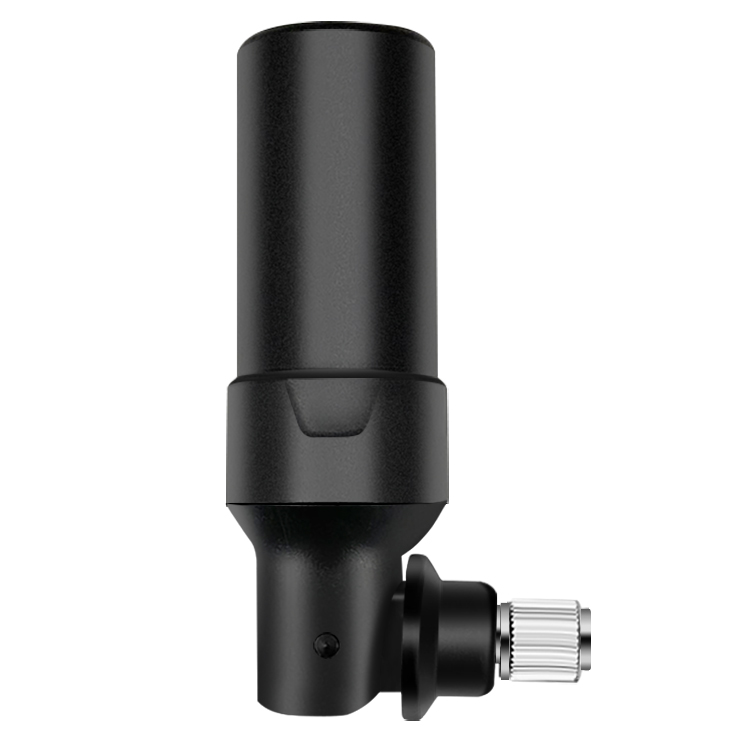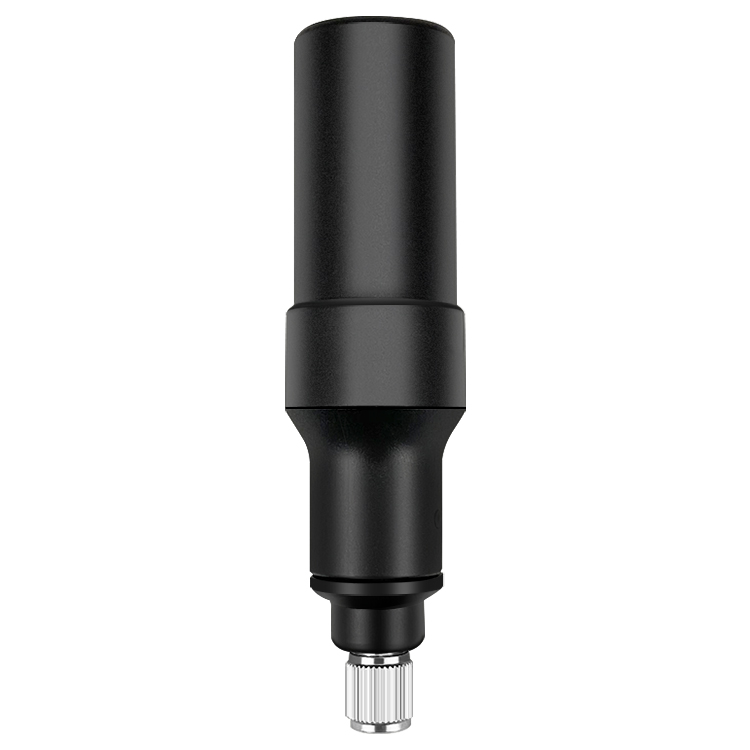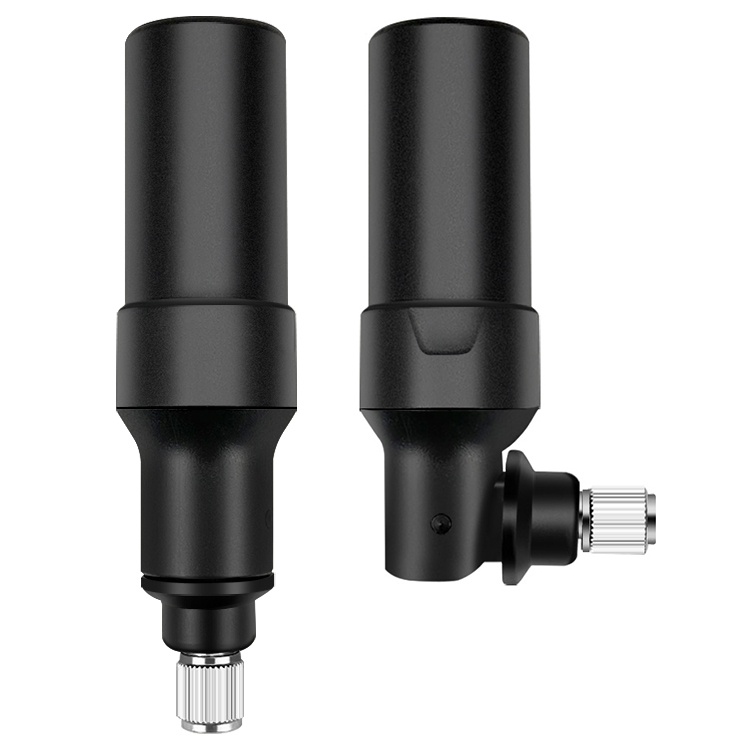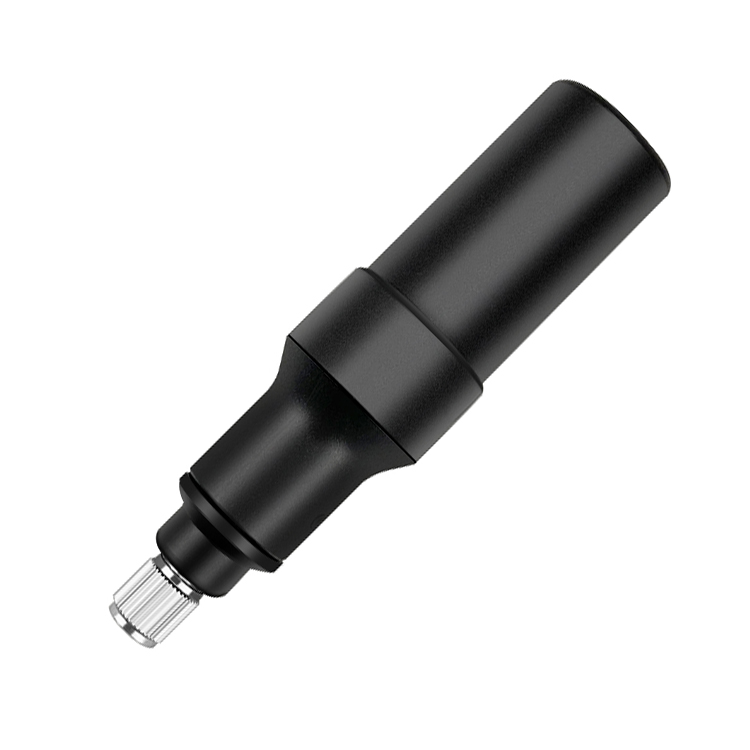At the core of this antenna’s functionality is its SMA connectivity—a choice that underscores its commitment to reliability and compatibility. SMA (SubMiniature version A) connectors are widely recognized in RF (radio frequency) applications for their robust performance, compact size, and secure coupling mechanism. The threaded design of SMA connectors ensures a tight, vibration-resistant connection, which is critical in environments where movement or external forces could disrupt signal transmission. For field applications such as surveying or outdoor monitoring, this stability prevents signal dropouts that could compromise data integrity. Additionally, SMA connectors are compatible with a vast array of coaxial cables and GNSS receivers, making the antenna highly versatile and easy to integrate into existing systems. Whether paired with a handheld survey device, a drone-mounted receiver, or a fixed base station, the SMA interface ensures seamless connectivity, reducing setup time and minimizing the risk of compatibility issues.
The antenna’s housing is constructed from ABS (Acrylonitrile Butadiene Styrene), a thermoplastic polymer celebrated for its unique blend of strength, durability, and lightweight properties. ABS is particularly well-suited for outdoor and industrial applications, as it resists impact, corrosion, and exposure to harsh weather conditions—including rain, snow, UV radiation, and extreme temperatures. This resilience is essential for a four-arm helical antenna, which is often deployed in challenging environments such as construction sites, remote wilderness areas, or coastal regions. Unlike metal housings, which can interfere with RF signals or add unnecessary weight, ABS is non-conductive, ensuring that the antenna’s performance remains unimpeded. The material’s moldability also allows for precise manufacturing of the antenna’s enclosure, ensuring a snug fit for internal components and maintaining the integrity of the helical design. For users, this translates to a durable, long-lasting antenna that can withstand the rigors of daily field use without compromising performance.
Polarization is a critical factor in GNSS antenna design, as it determines how effectively the antenna can receive signals from satellites. This four-arm helical antenna employs right-hand circular polarization (RHCP), a standard for GNSS applications due to its ability to match the polarization of signals transmitted by satellites. RHCP offers significant advantages over linear polarization, particularly in dynamic environments where the antenna’s orientation may change. Unlike linear polarization, which is sensitive to the angle between the antenna and the satellite, RHCP ensures consistent signal reception regardless of the antenna’s tilt or rotation. This is especially valuable in applications such as drones, where the antenna may be in constant motion, or in surveying, where the antenna’s position relative to the sky can vary. Additionally, RHCP minimizes the impact of multipath interference—signal reflections from surfaces like buildings or water—by reducing the strength of reflected signals, which tend to be left-hand circularly polarized (LHCP). This results in cleaner, more reliable data, a key requirement for precision positioning.
The antenna operates across a broad frequency range of 1154-1300 MHz and 1525-1621 MHz, covering a comprehensive set of GNSS bands: GPS L1 (1575.42 MHz)/L2 (1227.60 MHz), GLONASS L1 (1602 MHz)/L2 (1246 MHz), BDS (BeiDou) B1 (1561.098 MHz)/B2 (1207.14 MHz)/B3 (1268.52 MHz), and GALILEO E1 (1575.42 MHz)/E2 (1278.75 MHz)/E5a (1176.45 MHz)/E5b (1207.14 MHz). This extensive frequency coverage is a hallmark of the four-arm helical design, which is inherently capable of supporting multiple bands without sacrificing performance. By tapping into signals from multiple constellations and bands, the antenna ensures redundancy, reducing the risk of signal loss due to atmospheric interference, satellite outages, or geographical limitations. For example, GPS L2 and GLONASS L2 bands provide enhanced accuracy through carrier phase measurements, while BeiDou B3 offers improved performance in Asia-Pacific regions. Galileo’s E5a and E5b bands, designed for high-precision applications, add another layer of reliability, particularly in urban or challenging environments. This multi-band capability makes the antenna a versatile tool for global applications, from mapping in remote areas to supporting autonomous vehicles in dense cities.
LNA gain—a measure of the antenna’s low-noise amplifier’s ability to boost weak signals—is specified as 32 ± 3 dB (typical at 25°C). The LNA is a critical component in GNSS antennas, as it amplifies faint satellite signals (which can be as weak as -160 dBm when they reach Earth’s surface) while introducing minimal additional noise. A high LNA gain ensures that even the weakest signals are amplified to a level that the receiver can process, improving the antenna’s ability to track satellites in challenging conditions such as dense foliage, urban canyons, or deep valleys. The tight tolerance of ±3 dB indicates consistent performance across units, ensuring that users can rely on predictable results regardless of the specific antenna they deploy. This consistency is particularly important in applications where multiple antennas are used in a network, such as in precision agriculture or infrastructure monitoring, where data from different stations must be seamlessly integrated.
The antenna’s peak gain of ≥1.5 dBi is deliberately optimized for the four-arm helical design, balancing signal amplification with radiation pattern width. While higher gain antennas may offer stronger signal amplification in specific directions, they often have narrow radiation patterns that require precise alignment—a challenge in dynamic environments. The 1.5 dBi gain, by contrast, ensures a broad radiation pattern, allowing the antenna to receive signals from satellites across a wide range of elevations and azimuths. This is critical for maintaining connectivity with multiple satellites simultaneously, a requirement for accurate positioning. In applications such as drones or moving vehicles, where the antenna’s orientation is constantly changing, a broad radiation pattern prevents signal dropouts and ensures continuous tracking of satellites.
VSWR (Voltage Standing Wave Ratio) is a key indicator of how efficiently the antenna transfers power from the receiver to the electromagnetic field. This antenna boasts impressive VSWR specifications: ≤1.5 (typical), ≤1.8:1 (typical), and 2.0:1 (maximum). A VSWR of 1:1 represents perfect impedance matching, with all power transferred to the field, while higher values indicate that some power is reflected back to the source. The low VSWR of this antenna ensures efficient power transfer, minimizing signal loss and maximizing the strength of received signals. This efficiency is particularly important in low-signal environments, where every decibel of power counts. For surveyors and engineers relying on precise positioning data, low VSWR translates to more reliable satellite tracking and reduced errors in their measurements.
With an impedance of 50 ohms, the antenna aligns with the standard impedance of most GNSS receivers and coaxial cables. Impedance matching is critical for maximizing power transfer and minimizing signal reflections, which can degrade performance. By adhering to the 50-ohm standard, the antenna ensures seamless integration with existing equipment, eliminating the need for additional matching components that would add complexity and cost. This compatibility is a key advantage for users looking to upgrade their systems without overhauling their entire setup.
The antenna’s axial ratio of ≤1.5 dB is a standout feature, indicating near-perfect circular polarization. The axial ratio measures how closely the antenna’s polarization matches a perfect circle, with a value of 0 dB representing ideal circular polarization. A low axial ratio ensures that the antenna efficiently receives circularly polarized satellite signals, minimizing signal loss due to polarization mismatches. This is particularly important in high-precision applications, where even minor losses can translate into significant positional errors. For example, in surveying, a 1 dB loss in signal strength can lead to errors of several centimeters, which is unacceptable for projects requiring millimeter-level accuracy. The antenna’s low axial ratio ensures that it maintains optimal signal reception across all satellite positions, contributing to its exceptional precision.
A 360° omnidirectional radiation pattern ensures that the antenna can receive signals from satellites in all azimuth directions, eliminating blind spots that could compromise data collection. This is critical in environments where satellite visibility is limited, such as in urban areas with tall buildings or in mountainous regions. By capturing signals from all directions, the antenna ensures that the receiver can track a sufficient number of satellites to calculate precise positions, even when some satellites are obstructed. For applications such as autonomous vehicles, which require continuous, reliable positioning, an omnidirectional pattern is essential for avoiding signal dropouts that could lead to safety risks.
Phase-center accuracy and phase-center repeatability are perhaps the most critical specifications for high-precision GNSS antennas. This antenna delivers a phase-center accuracy of ≤2.0 mm and phase-center repeatability of ≤1.0 mm. The phase center is the point within the antenna where signals are effectively processed, and any deviation between this point and the antenna’s mechanical center (phase-center error) can introduce systematic errors in measurements. Phase-center accuracy refers to how closely the phase center aligns with the intended point, while repeatability refers to how consistently the phase center remains in the same position across different measurements or antenna units. For surveying and mapping applications, these metrics are paramount: a phase-center error of 2 mm or less ensures that measurements are accurate to within a few millimeters, while repeatability of 1 mm means that data collected from multiple antennas or over time can be reliably compared. This level of precision is essential for projects such as monitoring tectonic plate movement, where even minor shifts must be detected, or for constructing large infrastructure projects that require precise alignment.
-
Now, let’s explore the specific applications where this four-arm helical antenna excels, leveraging its advanced features to deliver unmatched performance. One of the primary applications is geodetic surveying, where millimeter-level accuracy is required for mapping the Earth’s surface, monitoring crustal deformation, or defining property boundaries. The antenna’s phase-center accuracy and repeatability, combined with its multi-band capability, make it an ideal tool for geodetic surveys, ensuring that measurements are both precise and consistent across large areas.
Autonomous vehicles represent another key application, where reliable, real-time positioning is essential for safe navigation. The antenna’s omnidirectional radiation pattern, RHCP polarization, and multi-band coverage ensure that autonomous systems can maintain accurate positioning even in urban canyons or challenging weather conditions. The low VSWR and high LNA gain further enhance performance, reducing the risk of signal loss that could lead to navigation errors.
In precision agriculture, the antenna enables farmers to map fields with centimeter-level accuracy, optimizing the application of fertilizers, pesticides, and irrigation. This not only reduces costs but also minimizes environmental impact. The antenna’s durability (thanks to its ABS housing) and ability to operate in a wide range of conditions make it suitable for use in agricultural machinery, which is often exposed to dust, moisture, and vibration.
Disaster response and monitoring is another critical application, where the antenna is used to map disaster zones, track the movement of wildfires, or monitor the stability of infrastructure after earthquakes. The antenna’s rugged design and reliable performance ensure that emergency teams can collect accurate data even in harsh environments, enabling faster, more effective response efforts.
Aerospace and defense applications also benefit from the antenna’s precision and reliability. Whether used in unmanned aerial vehicles (UAVs) for reconnaissance or in missile guidance systems, the antenna’s multi-band capability and phase-center accuracy ensure that critical positioning data is always available, even in contested or remote environments.




































































 Language
Language
 En
En Cn
Cn Korean
Korean

 Home >
Home > 








 18665803017 (Macro)
18665803017 (Macro)













